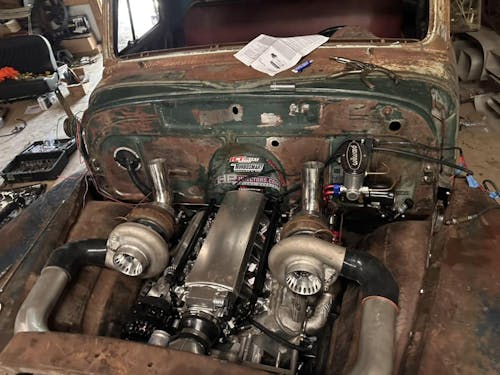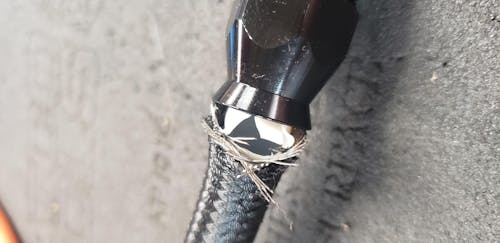Exhaust Band Clamps vs 4-Inch Exhaust Clamps: Which is Best for Your Performance Needs?
Exhaust Band Clamps vs 4-Inch Exhaust Clamps: Which is Best for Your Performance Needs?
Whether you're tuning a 1000hp drag car, turbocharging a diesel truck, or restoring a classic muscle car, proper exhaust clamps are critical to creating leak-free, robust connections. Two popular options are wide band-style exhaust clamps and traditional 4-inch worm-gear clamps. But when should you use each style?
In this guide, we'll compare these two exhaust clamp designs in-depth so you can choose the right one for your specific vehicle and performance application. We'll look at critical factors like:
- Clamping Mechanisms
- Durability Differences
- Cost Considerations
- Sealing Performance
- Clamping Range and Sizing
- Strengths and Weaknesses
By the end, you'll know exactly when to reach for band clamps versus 4-inch clamps to get reliable performance from your exhaust system. Let's dive in!
1. Clamping Mechanisms
First, the basic design and operation of each clamp:
Exhaust Band Clamps
These feature a full 360-degree stainless steel band that sits in a groove on a flanged sleeve piece. Tightening the bolt or cam compresses the sleeve flanges together for a complete seal.
Benefits:
- Evenly distributed clamping force
- No weak spots in the seal
- Maintains tight grip when hot
4-Inch Exhaust Clamps
These utilise a traditional worm-drive tightening mechanism and thin steel band. The narrow clamp overlaps itself by several inches when tightened.
Drawbacks:
- Potential leak points at band overlap
- Clamping force concentrated on the tightening mechanism
- Grip strength reduced at high temps
Now, let's compare long-term durability.
2. Durability Differences
Maintaining a robust seal over years of thermal cycling is key to any performance exhaust system. Here's how they stack up:
Exhaust Band Clamps
- Maintain constant clamping force. No relaxation over time.
- Resist corrosion and fatigue cracking.
- Immune to vibration loosening.
- Outlast multiple gaskets.
4-Inch Exhaust Clamps
- Prone to reduced grip as bands fatigue and relax.
- Susceptible to rust corrosion on worm drive.
- Clamp ends can loosen from vibration.
- Require frequent gasket replacement.
Band clamps maintain their strength long after traditional 4-inch clamps have failed or leaked. Their durability and longevity make them worth the extra investment.
3. Cost Considerations
You'll also want to weigh the cost differences when selecting clamp types:
4-Inch Exhaust Clamps
- Very inexpensive, usually $3 to $8 each
- Great for budget builds and common repairs
Exhaust Band Clamps
- Quality bands cost $30 to $60+ depending on size
- It is worth the extra cost for race/high-end applications
Using inexpensive 4-inch clamps on less critical areas like tailpipes and cheaper mufflers can save money. Then, use bands on crucial joints near the turbo and engine.
4. Sealing Performance
Preventing exhaust leaks is a top priority for any high-performance build. Here's how the clamps compare:
4-Inch Exhaust Clamps
- Susceptible to leaks as clamps relax over time
- Clamp overlap creates a potential weak point
- Higher failure rate on older vehicles
Exhaust Band Clamps
- Even a 360-degree seal with no weak spots
- Maintains leak-free seal when hot
- Virtually zero seal failures when installed correctly
The band clamp's full-circumference design has clear sealing advantages for critical connections and race applications. But 4-inch clamps can still seal adequately on street builds when maintained properly.
5. Clamping Range and Sizing
Clamp sizing flexibility is another key factor in selecting clamp types:
4-Inch Exhaust Clamps
- Limited size options. Usually just a 4-inch diameter.
- Require multiple clamps for significant diameter differences
Exhaust Band Clamps
- Available in a wide range of sizes from 1.5" to 6" diameter
- Single clamp accommodates large-size transitions
The adjustable nature of band clamps allows them to seal a broader range of pipe sizes. 4’ exhaust clamps require multiple clamps when stepping between different pipe diameters.
6. Strengths and Weaknesses
To summarise the key pros and cons:
4-Inch Exhaust Clamps
Pros:
- Inexpensive
- Common sizes readily available
Cons:
- Durability concerns over time
- Leak potential at clamp ends
- Limited diameter range
Exhaust Band Clamps
Pros:- Robust sealing even when hot
- Maintains grip long-term
- Wide size range
- Reusable connections
Cons:
- Expensive for large systems
- Aerospace-grade quality mandatory
Conclusion
When selecting clamps, consider exhaust band clamps for critical connections near the turbocharger, engine, and headers, where leaks can be catastrophic. Their durability and strength justify the higher cost for race and high-end street applications.
On less crucial areas like catalytic converters, resonators, and tailpipes, inexpensive 4-inch exhaust clamps still perform adequately as long as they are maintained. Just be vigilant about re-torquing them as they age.
Always source your clamps from reputable manufacturers like EVIL ENERGY for ultimate reliability. Their exhaust band clamps are specially engineered to aerospace standards for precise fitment and unparalleled quality. Moreover, they are currently offering discounts on their entire lineup of products. So, don't trust cheap clamps where failure means a ruined race or worse!
Here's a quick comparison summary:
|
|
4-Inch Exhaust Clamps |
Exhaust Band Clamps |
|
Clamp Mechanism |
Worm-drive bolt with band overlap |
360-degree band with flanged sleeve |
|
Durability |
Lower fatigue life. Prone to rust and relaxation. |
Maintains grip extremely well long-term. Withstands abuse. |
|
Cost |
Inexpensive |
More expensive, $30-$60+ for each |
|
Sealing Ability |
Weaker sealing long-term. Leak potential at clamp ends. |
Robust leak-free seal even in extreme conditions. |
|
Size Range |
Typically, one 4" size. Multiple clamps are needed for transitions. |
Wide range of sizes from 1.5"-6" diameter. |


![EVIL ENERGY 4/6/8/10AN PTFE Fuel Line Kit | E85 Nylon Braided Hose | 16/20FT Black Black with Comprehensive Fittings [20FT]](http://www.ievilenergy.com/cdn/shop/files/Test-2025-Evilenergy-125598065_165x.png?v=1742144807)
![ptfe hose fitting kit [16FT]](http://www.ievilenergy.com/cdn/shop/files/Test-2025-Evilenergy-125598171_165x.png?v=1742144807)
![CPE Fuel Line[25FT]](http://www.ievilenergy.com/cdn/shop/files/25FTCPE_FuelLine_165x.png?v=1735220649)
![CPE Fuel Line[20FT]](http://www.ievilenergy.com/cdn/shop/files/20FTCPE_FuelLine_165x.png?v=1735220649)















